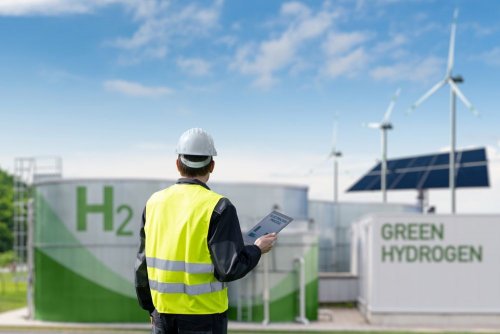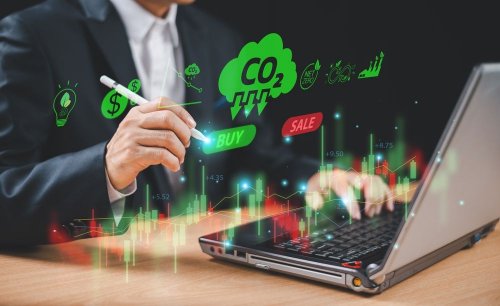Retailers need to be prepared to develop a climate strategy that includes a path to decarbonisation and a source of funding to pay for it
The costs of decarbonisation will be borne to varying degrees by stakeholders throughout the value chain, including suppliers, workers, the public sector, investors and consumers, informs McKinsey.
Although the path to decarbonisation remains unclear, retailers can prepare, better understanding how costs can be shared along the value chain.
Businesses will play an important role in the long-term climate struggle, which will require mobilizing efforts from each industry.
In 2016, there were only a small number of large retailers, including Walmart, with the scientifically sound goal of reducing carbon emissions. In just five years, more than 65 global retailers have set such targets, and their number has more than doubled each year.
As in other industries, retailers must resist their own direct and indirect emissions, as well as emissions from their long-range supply.
The distribution of costs will vary significantly across the retail subsectors, and the time frame for investment will be measured in decades, not quarters or financial years.
Retailers have access to a number of existing and new sources of funding, and can also lay the groundwork for engaging their industry, building partnerships and alliances so that they do not solve the problem on their own.
Calculation of the cost of decarbonization
The Greenhouse Gas Protocol divides emissions into three categories.
Thus, emissions of Scope 1 and 2 are generated directly by companies during their operations and indirectly through the purchase of energy, respectively. To reduce these emissions, retailers could improve the energy efficiency of LED stores, more efficient heating, ventilation and air conditioning (HVAC) engines, heat pumps, on-site solar power generation and battery storage.
They can also decarbonise their fleet with zero-emission vehicles. For grocery stores, in-store refrigeration poses a particular emission problem and requires efforts to detect and eliminate refrigerant leaks and, in extreme cases, complete overhaul of store systems.
Scope 3 includes emissions from the value chain that are not directly controlled by the retailer. This category includes emissions from suppliers in the production and transportation of products and emissions from consumers when using products.
Scope 3 emissions can account for 80% of the total carbon footprint for many companies and as much as 98% for home and fashion retailers.
The direct costs of reducing these emissions will fall primarily on suppliers. Most of Scope 3's emissions can be reduced by focusing on emissions from the use of products after they are sold. Measures include decarbonising the grid by switching to cleaner energy sources and encouraging consumers to trade in older, less energy-efficient products for new, more energy-efficient ones.
Expenditures other than emission reductions in Sections 1, 2 and 3 include the staffing of new teams and roles required for the internal management of the decarbonisation and transition process, as well as the cost of paying carbon taxes on residual emissions.
The cost profile of emission reductions will vary significantly between the retail subsectors. For example, clothing retailers often have stores located in malls and other apartment buildings, where the cost of converting stores to heat pumps may be too high and operational capacity is highly dependent on the landlord.
Financing of decarbonization transformation
Each stakeholder group can bear part of the cost, but retailers need to assess the wider impact to understand trade-offs and interdependencies.
Sellers and suppliers
Suppliers will be the starting point for most stakeholder efforts. Many domestic suppliers can absorb their costs in the short term and gradually pass on part of the increase to retailers. Some suppliers with strong brands are already making bold commitments to sustainable development.
Suppliers with lower brand awareness may be under pressure from large retailers to bear the cost of decarbonising Scope 3. Smaller retailers can take advantage of this dynamic while maintaining current prices with these suppliers, an example of the free ride effect.
Governments and regulators
Part of the cost of decarbonising the economy can be used to help consumers distribute environmentally friendly products through government incentives such as financial support for energy-efficient products, while others can support innovation through grants to technology companies, academic funding or targeted public procurement.
Investors
Investors are ready to play a dual role in the transition of retail to a low-carbon footprint. They require environmental, social and management strategy (ESG) from retailers in their case.
To prepare for decarbonization, retailers are advised to:
- Include sustainability in consumer research;
- Test green foods;
- Create transparency of emissions at the product level;
- Include decarbonisation in all procurement discussions;
- Involve key investors in decarbonisation strategy and planning;
- Join the public sector's efforts to decarbonise;
- Develop and manage relevant industry partnerships.
Even the world's largest retailers will benefit from all the industry's efforts to force individual suppliers to decarbonise their supply chain.
Consumer question
Consumer research shows that consumers are willing to pay for environmentally friendly products, sometimes up to 60%. These sentiments are most prevalent among Generation Z and high-income buyers, who are rapidly becoming the dominant consumers around the world.
As reported EcoPoliticа before, experts believe that carbon tax can accelerate decarbonization.





